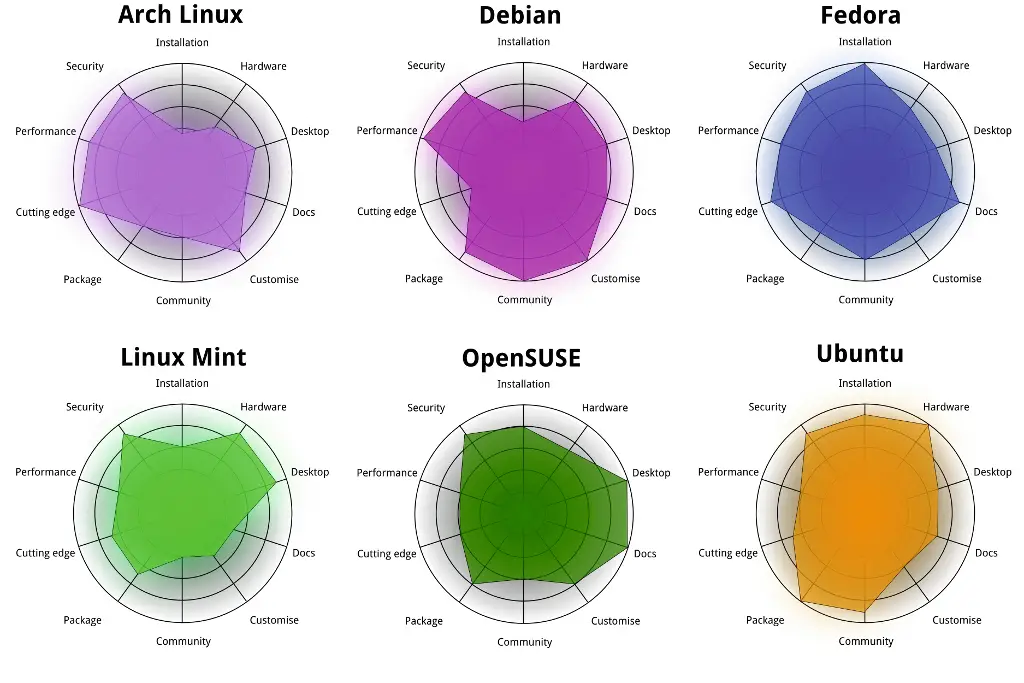Fedora vs. Mageia: RPM-based Distros Compared

Fedora and Mageia are two popular RPM-based Linux distributions with a similar focus on stability and enterprise-grade features. Both distros are renowned for their comprehensive package management systems, robust security measures, and extensive software repositories. However, there are subtle differences between these distros that may sway your choice depending on your specific needs and preferences.

Package Management and Repositories

Fedora employs the DNF package manager, known for its advanced dependency resolution and modularity. It offers access to a vast repository of software packages, including the latest stable versions as well as cutting-edge software in the “Rawhide” development branch. Mageia, on the other hand, utilizes the RPMDrake package manager, which provides a more traditional RPM-based experience. Mageia’s repositories contain a comprehensive selection of software, including both stable and bleeding-edge packages, offering a balance of stability and flexibility.
Release Cycle and Support
Fedora follows a strict release cycle, releasing a new version approximately every six months. Each release receives updates for one year, after which it is officially deprecated. Mageia, in contrast, has a longer release cycle, releasing new versions every 18 months. However, Mageia provides extended support for all of its releases, with each version receiving updates for approximately four years.
Security Features
Both Fedora and Mageia prioritize security, implementing robust measures to protect user systems. Fedora incorporates SELinux, a Mandatory Access Control (MAC) system that enhances security by enforcing fine-grained access permissions. Mageia employs AppArmor, another MAC system that provides similar protection mechanisms. Additionally, both distros offer automatic security updates to keep systems up-to-date with the latest security patches.
User Interface and Desktop Environments
Fedora Workstation typically utilizes the GNOME desktop environment, offering a modern and user-friendly interface. However, users have the option to install other desktop environments such as KDE Plasma, Xfce, and Mate. Mageia offers a wider selection of desktop environments, including GNOME, KDE Plasma, Xfce, Cinnamon, and MATE. This flexibility allows users to choose the interface that best suits their preferences.
Conclusion
Fedora is an ideal choice for users seeking a stable and well-supported distribution with access to the latest software. Its advanced package management, comprehensive repositories, and strict six-month release cycle make it a reliable and up-to-date distro. Mageia caters to those who prefer a longer release cycle with extended support. Its diverse desktop environment options and comprehensive software repositories offer a high degree of flexibility and customization. Ultimately, the best choice between Fedora and Mageia depends on your individual needs and priorities.

Awesome article! I appreciate your insights on these amazing Linux distros. I was wondering how they handle multimedia.
This article is full of inaccuracies! You clearly haven’t done enough research or lack basic technical knowledge.
Thanks for the useful info on these distros. Could you elaborate on their security features and package management capabilities?
Your comparison is biased towards Mageia. Fedora is clearly superior in terms of user friendliness and community support.
Oh, the eternal debate between Fedora and Mageia. It’s like comparing apples and, well, apples. They’re both great in their own ways.
Wow, I’m impressed by the depth of analysis here. It’s almost as if you’ve just summarized the Wikipedia pages for both distros.
Fedora vs. Mageia, huh? I guess it all depends on whether you prefer your Linux distro with a Red Hat or a Mageia hat.
Great article! As an experienced Linux user, I second your opinions on the strengths and weaknesses of these distros. Their package management systems are indeed key differentiators.
I’m not sure I agree with your assessment of Fedora’s stability. I’ve had plenty of issues with it myself.
Thanks for the comparison. I’m new to Fedora and considering switching to Mageia. How difficult would the transition be?
Mageia is hands down the better choice for advanced users. Fedora is great for beginners, but lacks the flexibility and customization options of Mageia.
Fedora vs. Mageia? It’s like the Coke vs. Pepsi of Linux distros. They’re both good, but you gotta pick your favorite.
I’m not a Linux expert, but even I can tell that this article is missing a lot of important information. It’s like a tech review written by a goldfish.
Fedora? Mageia? Who cares! I just use Linux Mint because it’s easy and has a talking dog as its mascot.